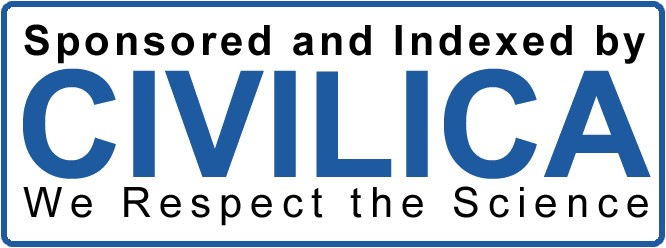Feasibility of Transformation in the Causes of Extinction of Legal Liability of Women with Emphasis on Their Physical Condition
Keywords:
Extinction of liability, legal liability, physical condition, womenAbstract
When liability emerged in the realm of law for individuals, the principle was that they are required to respond to that liability. One of the types of liability in the field of law is legal liability. This form of liability pertains to the financial and legal relations of individuals and is divided into two main categories: contractual liability and non-contractual liability. It appears that the extinction of individuals’ legal liability in Iranian law is limited to specific grounds. Accordingly, in Iranian law, if legal liability is imposed on an individual under special circumstances, or if due to particular conditions its fulfillment becomes impossible, or can only be carried out with extreme difficulty, the legal liability of individuals may be extinguished. Recent findings in medical research and advances in empirical sciences indicate that women’s special physical conditions in their monthly biological cycle to some extent affect their performance. This study, conducted using a descriptive-analytical method and library resources, seeks to answer the question of whether women’s physical condition may influence the extinction of their legal liability and whether it can be considered a new instance of the causes for the extinction of legal liability. The findings of this research suggest that, in response to this question, first, a distinction must be made between the various situations in which legal liability arises for individuals. Second, women’s particular physical condition can only be regarded as a ground for extinguishing liability in cases where either (a) at the time of contract conclusion, the individual was under the influence of intolerable duress caused by her physical condition, or (b) when the fulfillment of the obligation is contingent upon performance within a specific timeframe, and during this period, the occurrence of particular physical conditions in women results in the performance of the obligation being accompanied by extreme hardship.
References
Al-Mohseni, M. A. (1994). Al-Fiqh wa al-Masa'il al-Tibbiyyah (Jurisprudence and Medical Issues). Bustan-e Ketab.
Alishahi Qalehjooyi, A. (2020). The Impact of Premenstrual Syndrome on the Intent to Commit a Crime. Quarterly Journal of Medical Law, 14(55).
Alizadeh, H. (2006). The Relationship of Neurocognitive Executive Functions with Developmental Disorders. Quarterly Journal of Cognitive Science News, 8(4).
Amirhosseini, A. (2016). Factors Exempting Mass Media from Civil Liability in the Iranian Legal System. Quarterly Journal of Cultural-Communication Studies, 17(36).
Amoli, M. T. (2006). Qawa'id al-Usul (Rules of Principles). Majma' al-Fikr al-Islami.
Ansari, V. (2001). Kashf-e Elmi-ye Jarayem (Scientific Investigation of Crimes). SAMT.
Attarmanesh, M. (2020). A Re-evaluation of the Object of Exemption in the Hadith-e Ra'f Through a Systematic Semantic Approach. Yearbook of the Journal of the Principles of Islamic Jurisprudence, 3(3).
Ayati, S. M. R. (2019). A Conceptual Re-evaluation of Daman and Its Types in Islamic Jurisprudence. Bi-quarterly Journal of the Jurisprudential Foundations of Islamic Law, 12(24).
Babaei, I. (2023). Civil Liability: A Unified or Pluralistic Logic? Quarterly Journal of Private Law Research, 12(44).
Daryaei, R. (2020). A Reflection on the Relationship between the Civil Liability Act and the Grounds for Ex-contractual Liability in Iranian Law. Quarterly Journal of Legal Studies, 12(3).
Dehghani Manshadi, M. (2005). The Judge's Knowledge and Its Relationship with Other Evidences for Proving a Claim University of Tehran, Faculty of Theology and Islamic Studies].
Dickerson, L. M., Pamela, J. M., & Hunter, M. H. (2003). Premenstrual Syndrome. Am Fam Physician, 67(8).
Emami, H. (2003). Adelleh-ye Esbat-e Da'va (Evidence for Proving a Claim). Islamiyeh Publications.
Fakha'li, M. T. (2010). A Study on the Nature of the Method of the Rational and Its Relation to the Rule of Reason. Quarterly Journal of Jurisprudence and Principles, 84(1).
Hejazi, S. A. (2016). Study and Determination of Indicators for Diagnosing Will and Discretion in Referred Psychiatric Patients at the Forensic Psychiatry Department. Iranian Journal of Forensic Medicine, 22(3).
Houshmand Firozabad, H. (2020). A Jurisprudential and Legal Analysis of Some Causes of Exemption from Civil Liability in the Quran. Bi-quarterly Journal of Civil Jurisprudential Teachings, 12(21).
Jafari Langroudi, M. J. f. (2023). Vasiyt dar Terminologi-ye Hoghoughi (The Intermediary in Legal Terminology). Ganj-e Danesh.
Javanmard, B. (2023). Feasibility Study of the Effect of Premenstrual Mood Swings on the Judicial Process and Sentencing: A Comparative Study. Quarterly Journal of Health Law, 1(1).
Judiciary's Deputy of Training and Research. (2009). Collection of Jurisprudential Advisory Opinions on Legal Matters. Jangal.
Katouzian, N. (2016). General Rules of Contracts: Contractual Enforcement (Vol. 4). Enteshar Publishing Company.
Kavaklı, Z., & Özmen, S. G. (2024). Effects of Premenstrual Syndrome and Giving Birth on Women's Cognitive Abilities. BAU Health Innov, 1(2). https://doi.org/10.14744/bauh.2024.09719
Kazemi, M. (2022). The Nature and Basis of Contractual Liability: A Comparative Study in Islamic and French Law. Quarterly Journal of Comparative Research on Islamic and Western Law, 9(3).
Khomeini, R. (2002). Tahrir al-Wasilah. Dar al-Elm Publications.
Mohaghegh Damad, S. M. (2021). Qawa'id-e Fiqh: Criminal Section. Islamic Sciences Publishing Center.
Mohammadi, A. (2009). Sharh al-Rasa'il. Dar al-Fikr.
Najafi, M. H. (1987). Jawahir al-Kalam fi Sharh Sharayi' al-Islam. Maktabat al-Islamiyya.
Pouriyan, H. (2023). Forensic Medicine's Criteria and Tools for Measuring Mental Disorders Leading to Insanity. First National Conference on Health Promotion and its Legal and Medical Challenges, Maragheh.
Rey, A. D., Chrousos, G., & Besedovsky, H. (2008). The Hypothalamus-Pituitary-Adrenal Axis (Vol. 7). Elsevier.
Salarzayi, A. (2016). The Value of Judicial Opinions Based on Laboratory Data Compared to Other Evidence. Yearbook of Medical Jurisprudence, 8(26 & 27).
Sedighi, S. (2022). Expert Opinion on the 'Bill to Protect the Rights of Individuals with Mental Disorders'. (Vol. 11).
Tabesh, A. (2024). A Study of the Degree of Correspondence between Expert Opinions Issued by Provincial and Central Forensic Medicine Commission Offices Regarding Cases of Inability to Manage Financial Affairs Due to Dementia. Iranian Journal of Forensic Medicine, 30(3).
Yaqouti, I. (2022). The Impact of Menstruation on Women's Criminal Law in Iran. Quarterly Journal of Comparative Criminal Jurisprudence, 2(2).
Zare, H. (2012). The Effect of the Menstrual Cycle on Metamemory, Everyday Memory, and Prospective Memory in Women Aged 18-45. Journal of Women's, Obstetrics, and Infertility Monthly, 15(41).
Zare, H. (2019). The Effect of the Menstrual Cycle on Types of Attention and Executive Functions in Women Aged 18-30. Quarterly Journal of Cognitive Science News, 21(2). https://doi.org/10.30699/icss.21.2.15
Downloads
Published
Submitted
Revised
Accepted
Issue
Section
License
Copyright (c) 2025 Maryam Eizadi (Author); Arezoo Malekshah (Corresponding author); Ahmad ommi (Author)

This work is licensed under a Creative Commons Attribution-NonCommercial 4.0 International License.








